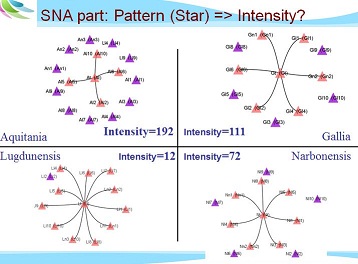
Reffay, C., Teplovs, C., Blondel, F.-M. (2011). Productive re-use of CSCL data and analytic tools to provide a new perspective on group cohesion. In Connecting Computer-Supported Collaborative Learning to Policy and Practice: CSCL2011 Conference Proceedings. Volume II – short papers, Hans Spada, Gerry Stahl, Naomi Miyake, Nancy Law (Eds.), pp. 846-850, 4-8 july, 2011, Hong Kong, China.
Get this article (fulltext and references): http://edutice.archives-ouvertes.fr/edutice-00616547/en/
Overview
The goals of this paper are twofold: (1) to demonstrate how previously published data can be re-analyzed to gain a new perspective on CSCL dynamics and (2) to propose a new measure of social cohesion that was developed through improvements to existing analytic tools. In this study, we downloaded the Simuligne corpus from the publicly available Mulce repository. We improved the Knowledge Space Visualizer (KSV) to deepen the notion of cohesion by using a dynamic representation of sociograms. The Calico tools have been used and extended to complete this cohesion measure by analyzing lexical markers. These complementary analyses of cohesion, based on clique sizes and communication intensity on the one hand, and lexical markers on the other hand, offer more detailed information on (a) the relationships between participants and (b) the structure and intensity of communication. In particular, the analyses highlight strong convergences that were not visible in the previous analysis.
Mulce data
Corresponding data have been extracted from the LETEC corpus Simuligne : mce.simu.all.all . information on the corpus here. Its full contents can be downloaded from the Mulce server (url à modifier)
Analysis with the tool Calico

Analysis with the tool KSV
